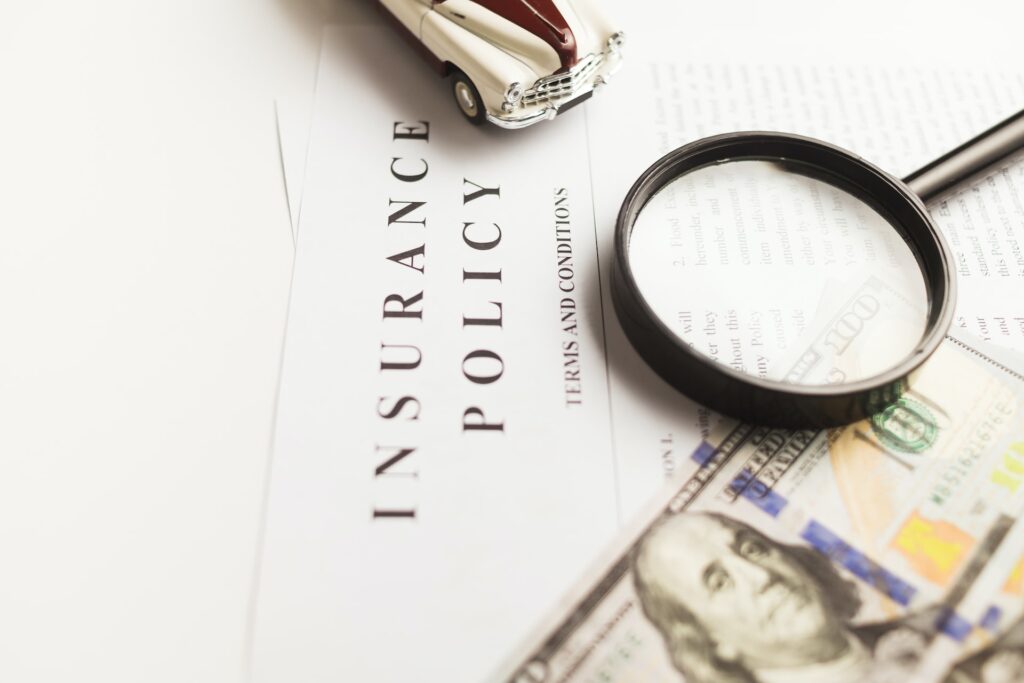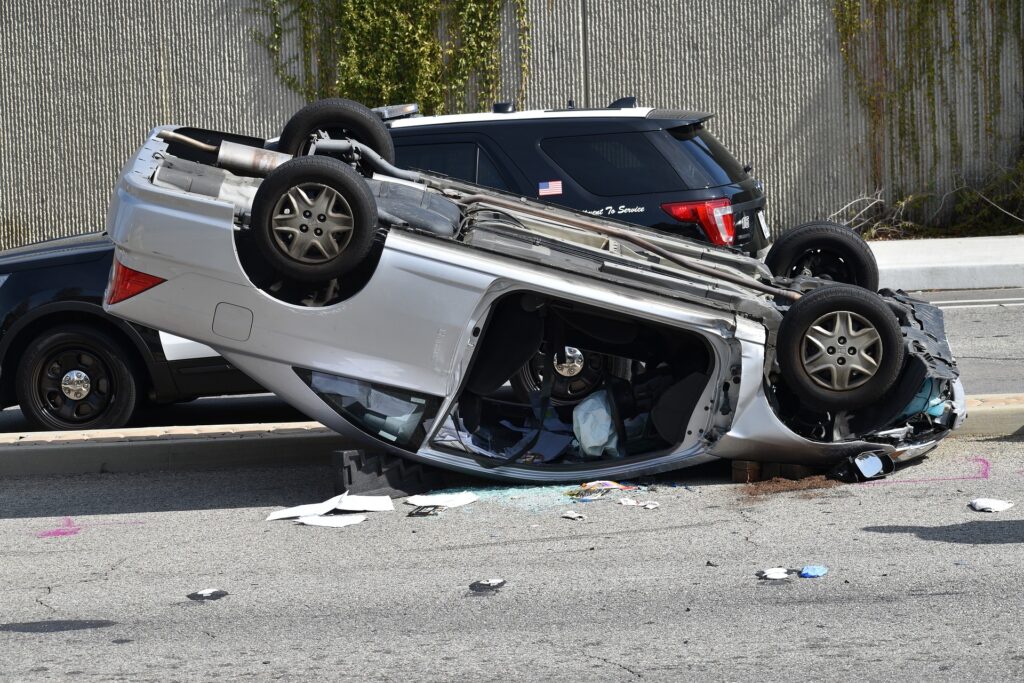In 2020, 3,558 fatal crashes led to 3,847 deaths in California. Out of 100,000 population, 9.7 people die due to road accidents. Aside from fatalities, car accidents also result in injuries and property damage.
For instance, a speeding car caused a high-impact accident in Los Angeles. As a result, four people died, and eight people sustained injuries. A surveillance video showed that the vehicle ran a red light and burst into flames after colliding with multiple cars. The fire was so destructive that it melted a traffic light.
Another incident involved a Hyundai Accent and a Honda Accord. While crossing the double yellow lines, the Hyundai Accent hit the other vehicle, killing one motorist and four passengers. According to the California Highway Patrol, the Hyundai driver might have been under the influence during the accident.
These are preventable accidents in California caused by apparently negligent drivers. Most people may assume that the at-fault party would be liable for all damages. However, that may depend on part on the answer to one question: is California a no-fault state?
Connect with a personal injury lawyer if you suffered bodily injury or property damage in a California car accident. An attorney can answer questions of liability for damages and negotiate with your
Key Takeaways
|
At-Fault State vs. No-Fault State
States may either follow the at-fault or no-fault system. This will affect the auto
What is an at-fault state?
An at-fault state establishes the at-fault party and deems them responsible for the resulting damages and injuries. In a car accident, the at-fault driver’s insurer is typically accountable for paying the damages. These include medical bills, and other costs associated with the accident, up to the policy limits.
California is a fault state. Consequently, the at-fault driver’s
Your lawyer may compile and submit documents to the
If the
You can recover damages if you win the case. Aside from monetary losses, the court can also award non-economic damages. These compensate for pain and suffering, anguish, and emotional trauma.
What is a no-fault state?
In a no-fault state, the drivers must file a claim with their own
According to the
States with no-fault
However, drivers in Massachusetts must have four types of insurance coverage. The state requires PIP, bodily injury liability, injury caused by an uninsured automobile, and PDL. The required minimum limit for PIP is $8,000 and $5,000 for property damage, which is less than the coverage in Florida.
Michigan requires a higher minimum coverage of $50,000 for PIP. The state also allows vehicle owners to choose from auto
Car Insurance in California


Drivers in California should know important auto
Insurance requirements
Section 16020 of the California Vehicle Code requires motorists to carry proof of auto liability
- Motor vehicle
insurance policy - $35,000 cash deposit with the DMV
- Self-insurance certificate
- $35,000 surety bond
Section 16056 of the Vehicle Code also provides the minimum
Uninsured motorists
According to the Department of
UMC and UIC pay for your medical bills in case the at-fault party is an uninsured or underinsured driver. The coverage is the same as indicated in your policy. Moreover, it covers other expenses, such as property or vehicle damage repair costs.
Section 16029 of the California Vehicle Code provides penalties for driving without
Process
You must notify your insurer about the incident so the adjusters can investigate your claim. The company will also contact you to ask for more details, such as injuries and losses. The adjuster will inspect vehicle damage, medical bills, and other evidence.
After the investigation, they will provide an estimate. You may reject the offer and let your car accident attorney negotiate with the company. According to the California Department of
Determining Liability in California Auto Accidents
The possible liable parties in a motor vehicle accident include the drivers, auto manufacturers, and the government.
Drivers
Your car accident attorney must prove the other driver’s negligence. The following negligent acts may lead to road crashes in California:
- Failure to stop at a red light
- Inattentive driving
- Drunk driving
- Failure to yield the right of way
- Speeding
- Improper lane changes
For example, a Corvette ran a red light in San Fernando Valley, causing the death of two people. A surveillance video showed the Corvette hurtled into a mini mall’s parking lot after hitting a Honda Accord. According to the police, the Corvette’s speed was about 90 mph before the accident.
In Sutter County, California, a Chevrolet pickup truck collided with a Chevrolet Trailblazer. It led to the death of a mother and her infant. The California Highway Patrol found that the Chevrolet driver exceeded the legal blood alcohol concentration (BAC) limit. As a result, the police arrested him on suspicion of DUI.
The other driver may also be liable due to distracted driving. It involves any behavior that takes a driver’s mind off the road. Using a phone while operating a vehicle is an example of inattentive driving. Daydreaming while driving can also lead to accidents because the driver does not have their full attention on the road.
Auto manufacturers
The product liability doctrine provides the plaintiff with a cause of action in case of defective items, such as cars and auto parts. You may sue based on manufacturing defects, design flaws, inadequate warning of risks, and breach of warranty.
Government regulators and companies have recalled vehicles in the past. For example, California-based Riven Automotive recalled 13,000 cars due to loose fasteners. A company representative said that the loose fasteners might affect the steering knuckle and lead to loss of control. Riven also recalled almost 500 pickup trucks because of possible airbag issues.
Ford also recalled 800 vehicles due to a braking system defect. The company stated that the potential leak might cause longer and inconsistent brake pedal travel. Although no related accidents have been reported, manufacturing defects increase crash risk.
In January 2023, Hyundai recalled a hybrid car model. According to the company, the recall was due to a suspected issue with the fuel tank that may cause fires. Owners and passengers may notice a fuel smell or visible leak in affected vehicles.
States and cities
ABC7 News reported that 391 potholes across the Bay Area affected more than 24 vehicles. One car even veered in another direction. A victim complained of the expenses needed for a tire replacement. KRON-TV also stated that a pothole in CA-101 damaged almost 25 vehicles.
California allows people to submit damage claims in case of fatality, injury, or property damage. The state only collects filing fees for claims of $10,000 or more.
You must complete and sign Form LD-0274 and send the documents to the District Claims Office. But in case of claims over $10,000, you must submit the necessary documents to the Government Claims Program.
Filing a Car Accident Case in California
Before filing a car accident lawsuit, you must hire a personal injury attorney. They can establish legal standing and follow the claims process.
Hire a lawyer
A personal injury lawyer can give legal advice after knowing the facts of your case. They also visit the accident scene to gather evidence and interview possible witnesses.
Moreover, they can request medical records that may be difficult to access. A personal injury lawyer can help build strong evidence for your car accident case.
An attorney also reviews the police report and other documents related to the incident. This way, it can better negotiate with the at-fault driver’s
Establish legal standing
The court will accept your case if you have legal standing. It refers to your capacity to file a particular case. For example, the injured person can initiate a personal injury lawsuit but not a bystander.
In California, you can sue a person or a business. Your car accident lawyer must know the other driver’s legal name and address to file a complaint. In suing a business, you can file a suit against the owner or the company’s legal name.
Observe the statute of limitations
Section 335.1 of the California Code of Civil Procedure states that injured parties must file a personal injury lawsuit within two years. After the time limit, the court will not allow filing a civil case with the same cause of action.
Did you know?
On average, auto insurance in California costs $2,521 annually. But if you only want the minimum coverage cost, you can pay $764 yearly. The car insurance cost in California is reasonable compared to other states.
Find a Car Accident Lawyer in California
California is an at-fault state, which means you must establish liability for vehicle accidents in California. Once you have evidence of fault, you must file an injury claim with the other party’s
Visit The Personal Injury Center to learn more about California accident laws so that you can protect your rights. We can also match you with an attorney through our free case evaluation.
File an insurance claim or lawsuit for a car accident in California. Visit The Personal Injury Center for free legal information and consultation now!
FAQs on California Car Accidents
Is there accident forgiveness in California?
No, accident forgiveness is not available in California. Insurance companies that offer accident forgiveness will not consider a first accident in calculating your premiums. Some insurers offer this option as an incentive to new customers.
What are the common types of auto accidents in California?
Road accidents in California include rear-end collisions, head-on crashes, side-impact collisions, and side-swipe accidents. Single and multiple-vehicle crashes are also common in the state.
How long before you can settle a car accident case in California?
Incidents involving non-catastrophic injuries can take about six months to settle. But if it goes to trial, the average timespan for a resolution is 18 months.



